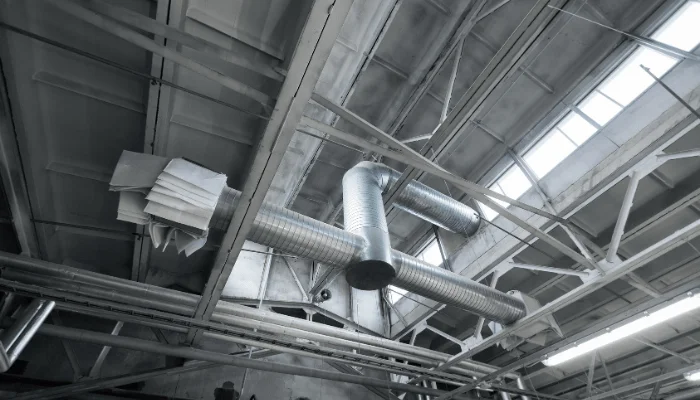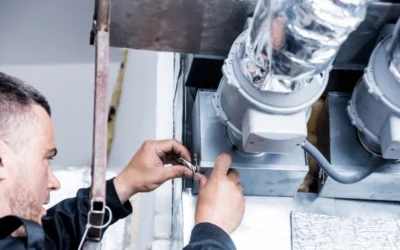As a homeowner, ensuring that your indoor air quality is top-notch and your HVAC system is working efficiently should be among your top priorities. One key factor that contributes to this is proper ventilation, and there are times when you may need adding vents to existing ductwork systems. In this article, we’ll discuss the importance of proper ventilation in homes, the need to add vents to existing systems, and how Energy HVAC Services can be your trusted provider for this and other HVAC needs.
Energy HVAC Services stands as a respected provider in the heating, ventilation, and air conditioning industry. Our team, composed of dedicated and seasoned experts, is driven by a commitment to excellence, ensuring your home remains comfortable throughout the seasons. From regular HVAC maintenance to more complex tasks like integrating vents into existing ductwork, our breadth of expertise is designed to meet your needs.
Understanding the Need to Adding Vents To Existing Ductwork
Whether you’re experiencing changes in family size or layout or you’ve noticed areas with poor air circulation, adding vents to your ductwork can significantly improve your home’s airflow, energy efficiency, and comfort. A growing family, for instance, means more people occupying certain rooms, which can lead to insufficient airflow and discomfort.
Poor air circulation can also cause stuffiness, lingering odors, and poor indoor air quality, which can be detrimental to your health. Having the proper number and placement of vents ensures that the conditioned air is distributed evenly throughout your home, thereby enhancing your comfort and health.

Adding Vents to Your Existing Ductwork
Key Considerations Before Adding Vent To Existing Ductwork
When considering adding a new vent, there are factors to consider to ensure that your new addition works correctly and doesn’t compromise your HVAC system’s efficiency and performance:
- Assessing the Current System: Before making any changes, it’s crucial to understand your current ductwork layout. This includes knowing the size of the ducts, the number and placement of existing vents, and the capacity of your HVAC system.
- Professional Consultation: Engaging a professional like Energy HVAC Services is necessary. Our experts can carry out a comprehensive assessment to determine the best locations for additional vents and ensure the changes won’t compromise the efficiency of the system.
- Balancing the System: Adding more vents can sometimes disrupt the balanced distribution of air, leading to hot or cold spots in your home. Therefore, it’s essential to maintain a balanced system when adding vents.
- Size and Type of Vents: The size, type, and design of the vents should be compatible with your existing ductwork and the aesthetics of your home. They should be large enough to improve airflow but not so large that they overpower the look of the room.
- Cost Implications: Adding vents to your ductwork is an investment. You should consider the potential return in terms of improved energy efficiency and household comfort against the initial outlay. Energy HVAC Services offers competitive pricing for our quality workmanship and products.
- Consider Your Home’s Structure: The structure of your home can impact where vents can be placed. Factors such as the location of load-bearing walls, the layout of your rooms, and the presence of attics or basements can all influence the vent installation process.
Benefits of Properly Added Vents
Thinking of adding vents to your current ductwork? It’s a smart move! Doing it right can amp up your home’s coziness and make your HVAC system work even better. Let’s dive into the big perks of going down this route:
- Improved Indoor Air Quality: Proper ventilation through adequately added vents can drastically improve indoor air quality by mitigating pollutants, allergens, and odors, promoting a healthier living environment.
- Enhanced Comfort: Correct placement and number of vents ensure even distribution of conditioned air, eliminating hot or cold spots in your home and enhancing overall comfort.
- Increased Energy Efficiency: By facilitating proper airflow, the added vents can boost your HVAC system’s efficiency, reducing energy consumption and leading to potential savings on utility bills.
- Longer HVAC Lifespan: Adequate ventilation reduces the strain on your HVAC system, helping to prolong its lifespan and reduce the need for frequent repairs or replacements.
- Optimal Humidity Control: Proper ventilation can help maintain optimal levels of humidity in your home, preventing issues like mold, mildew, and damage to building materials.
- Value Addition to Your Home: Well-planned and executed ventilation improvements can add value to your home, making it more appealing to potential buyers.
Conclusion
To wrap things up, good airflow and ventilation in your home are more than just about comfort; they’re about your well-being and smart energy use. Adding vents to existing ductwork is a solid step forward, with benefits lasting for years. And when you have Energy HVAC Services on your team for the installation? Well, you’re in for top-tier service you can trust. For the sake of your home’s air and for saving energy, give Energy HVAC Services a call. We’re here to make a real difference.
Frequently Asked Questions
How long does it usually take to install an additional vent?
The time to install an additional vent typically depends on the complexity of the existing ductwork and the vent's location. Generally, a straightforward installation can take a few hours, but more complicated setups might require a full day or longer. It's best to consult with an HVAC professional for a precise estimate.
Are there specific considerations when choosing a location for the new vent?
Yes, when choosing a location for a new vent, it's crucial to consider room size, airflow balance, and obstructions like electrical wiring or plumbing. The goal is to optimize air distribution and ensure efficient heating or cooling throughout the space.
What potential challenges can arise when adding a vent to older duct systems?
When adding a vent to old ducts, you might face issues like worn-out materials, wrong sizes, or old designs that don't fit new parts well. Also, there could be dirt or mold inside, meaning extra cleaning or fixing might be needed.
More Articles:





